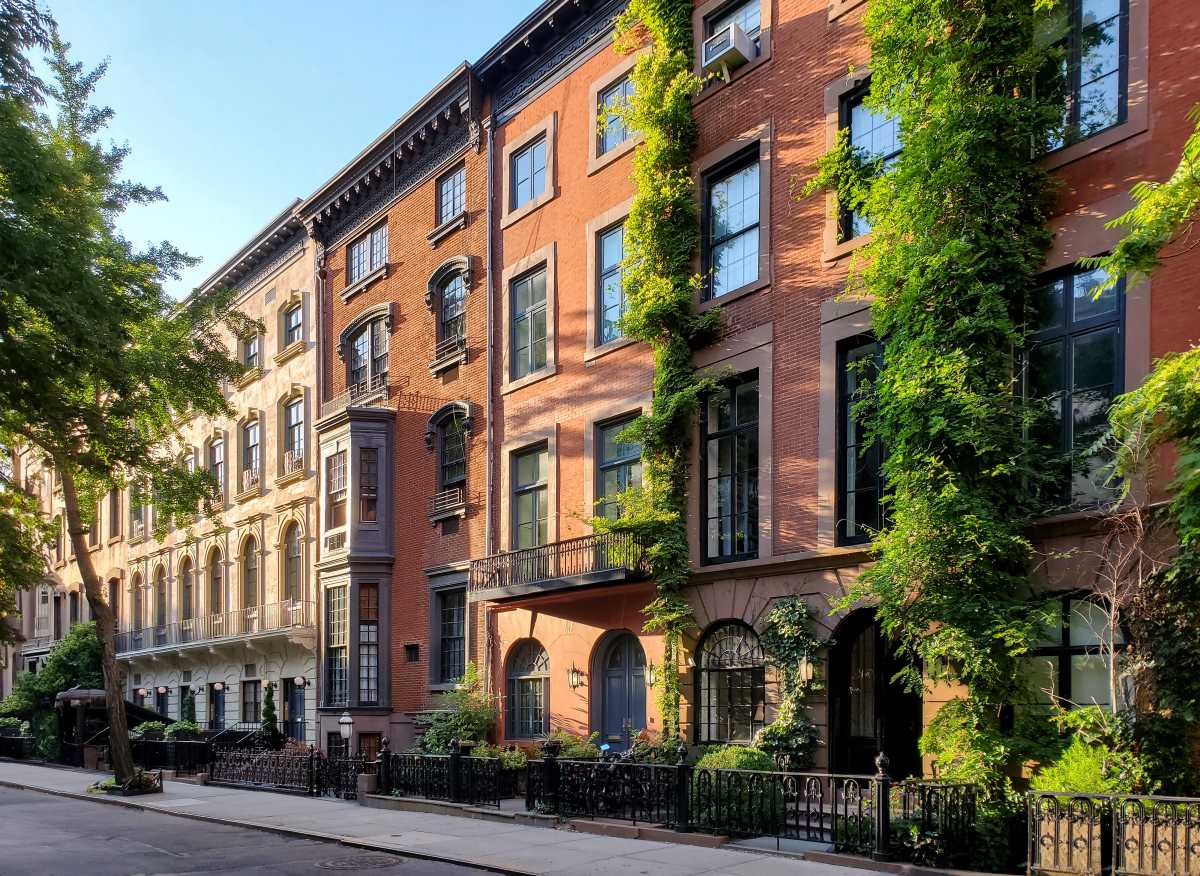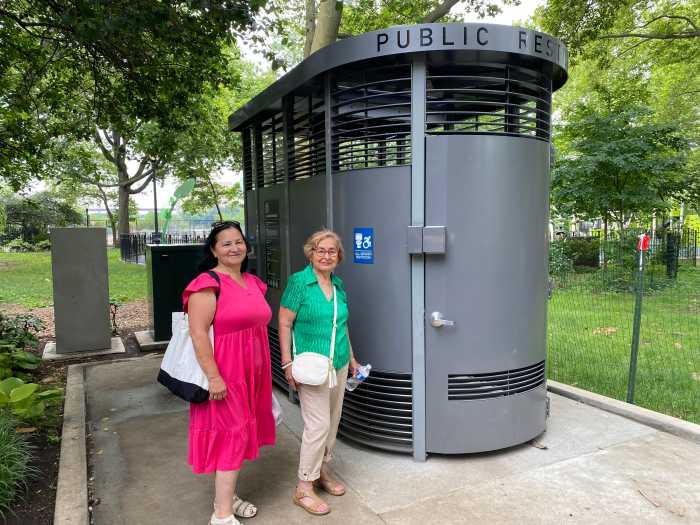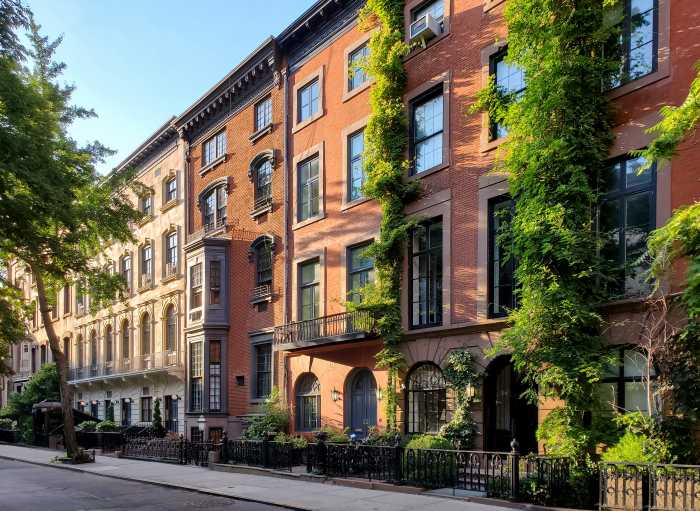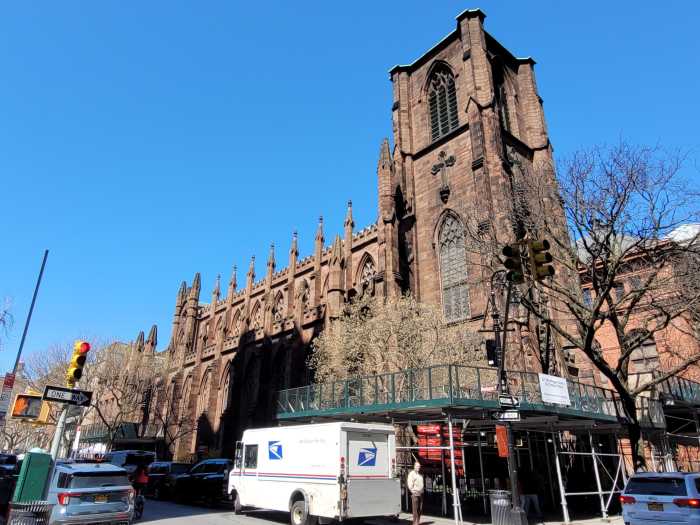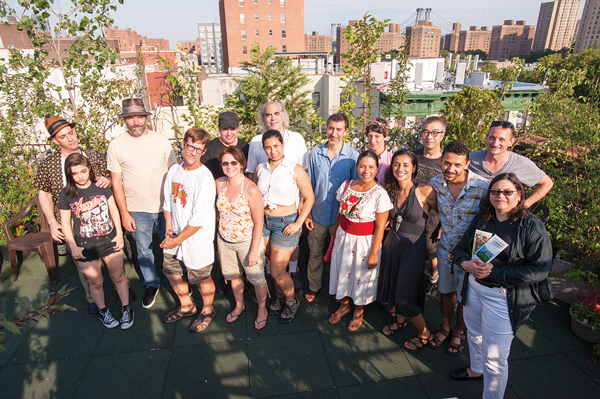
BY LINCOLN ANDERSON | Squatters were always good at making use of whatever they could to repair their buildings. In the early days, for example, when they were rebuilding burned-out East Village tenements, a favored material for creating new window frames were, ironically, the blue planks from the very same N.Y.P.D. sawhorses that were often used during eviction actions against them.
Not surprising given that D.I.Y. attitude, Umbrella House, a former squat at 21 Avenue C, at E. Second St., is now using its rooftop to grow its own vegetables for the building residents’ consumption. The brand-new 820-square-foot “intensive green roof,” which also assists with stormwater runoff, is being touted as a model for other New York City buildings. It’s currently growing kale, broccoli, tomatoes, basil, chard, eggplant, medicinal herbs and more. Most of the vegetables were not grown from seeds but from starter plants from Grow NYC.
On Sat., July 18, Umbrella House, which currently has 32 residents, held an open house for the community to showcase the green roof, at which the building residents explained how they did it.
The soil, 8 inches deep, is mounted atop a base of 16-inch steel beams, a layer of concrete and membranes. The total cost was about $150,000.
Money for the project came from the common funds of Umbrella House, which include $7,000 a month from two ground-floor commercial tenants, a barber shop and a Spanish-language financial services store.
“This was just out of our funds,” explained Tauno Bilsted, a building resident. “And we have the commercial storefronts; we run a surplus every year.”
The plants are irrigated by a simple drip system, plastic tubes that cost only $250 and were simple to install. A solar-panel rain sensor shuts the water off automatically so there is no waste.
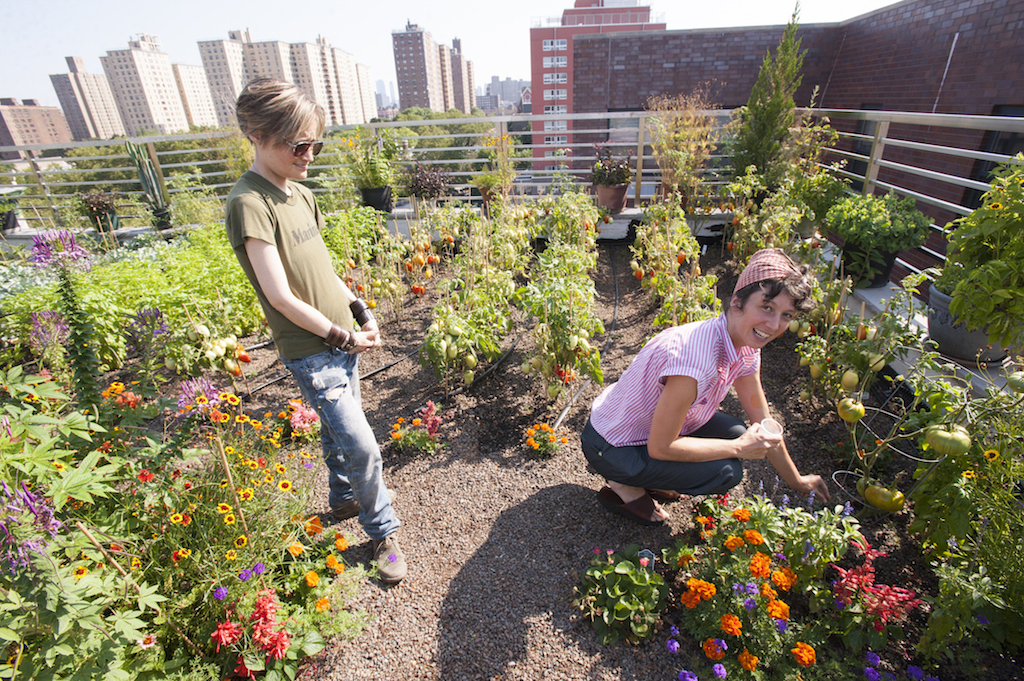
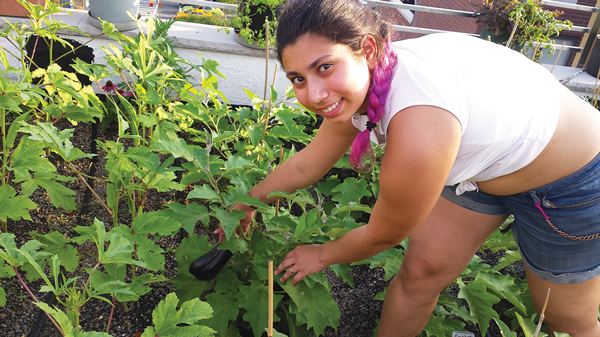
Councilmember Rosie Mendez, who attended the event, was impressed.
“I think it’s awesome and I think it’s inspirational,” she said of the verdant rooftop. “And I think it should be a model of what many of us can do in our neighborhoods. Many don’t think it’s possible. But once you see it, then you realize it’s possible and you can take affirmative steps to do it for yourself.”
Squatters first occupied Umbrella House in 1989. It managed to survive the wave of squatter evictions by the city. Then, in 2002, Umbrella House, like 11 of the other remaining East Village squats, was sold to its residents by the city for $1. As part of the deal, the squats had to be renovated and brought up to the building code, after which the squatters — now technically redubbed homesteaders — could then buy their units at an affordable price.

Umbrella House has successfully completed that process, having converted to a Housing Development Finance Corporation in 2010. The tenants in place at the time of the conversion could buy their apartments for just $250. Each unit currently pays a $1,100 a month combined maintenance / mortgage fee.
Under the agreement with the city, there is a cap on apartment resale prices. For example, a two-bedroom unit can currently only be sold for about $161,000. Yet, the resale price increases by $5,000 each year. This deal is the same for all of the 11 former squats. Umbrella has had three resales to date.
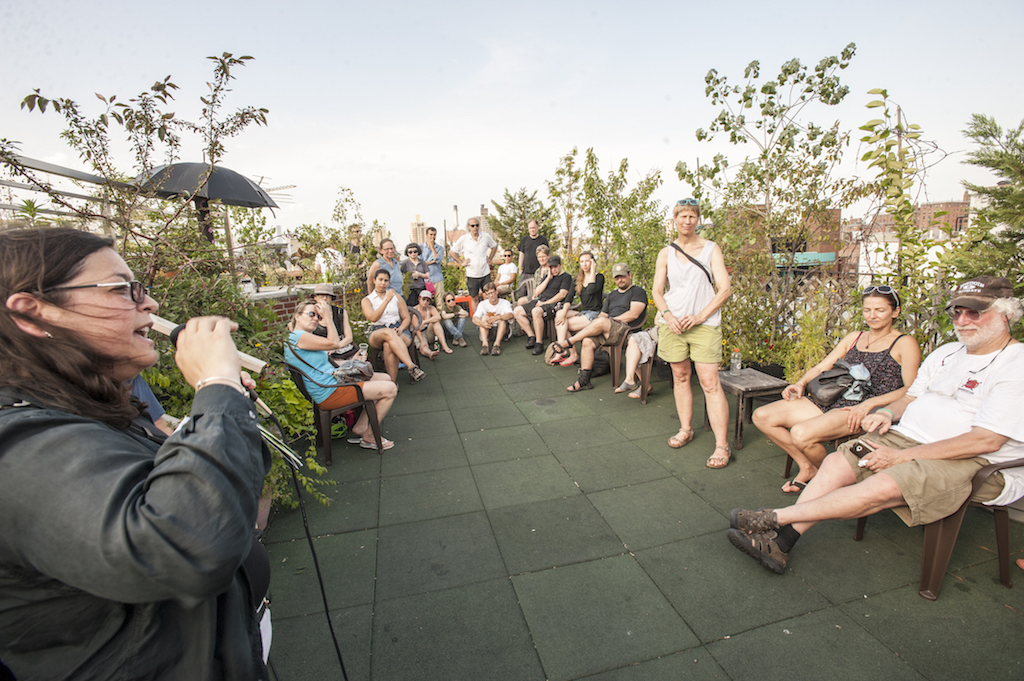
Geanme Marin, another longtime Umbrella resident, made baked empanadas for the open house using veggies right from the rooftop garden.
“It’s great,” she said of the building’s new urban farm.
Her daughter, Paula Merchan, is one of two children who were born in the squat. The same midwife delivered both babies.
Fittingly, her daughter was born “in a squatting position, actually,” Marin recalled. “I tried everything — and then when I tried the squatting position, she came.”
Merchan is very interested in the garden. She weeds and tends it, and planted the basil and most of the broccoli.
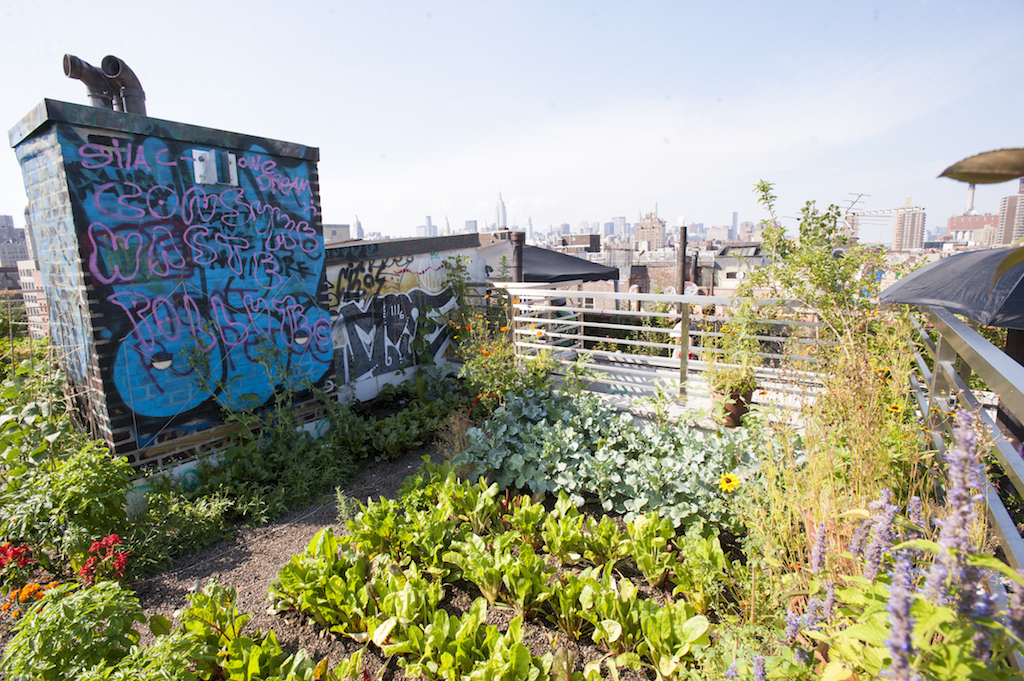
Just as the garden is a unique learning experience for her now, so too was growing up in the squat.
“Oh, it was pretty awesome,” she said. “We didn’t have heating until I was seven. I didn’t know that was not normal. At one point we kept a shampoo bottle in the fridge because it was warmer than in the apartment. At one point, we had a communal shower and bathroom. You had to wait to use it.”
She and Marcelo — the other child born in the squat, to Matt Metzgar and Marta Dan — had fun growing up in the funky living environment.
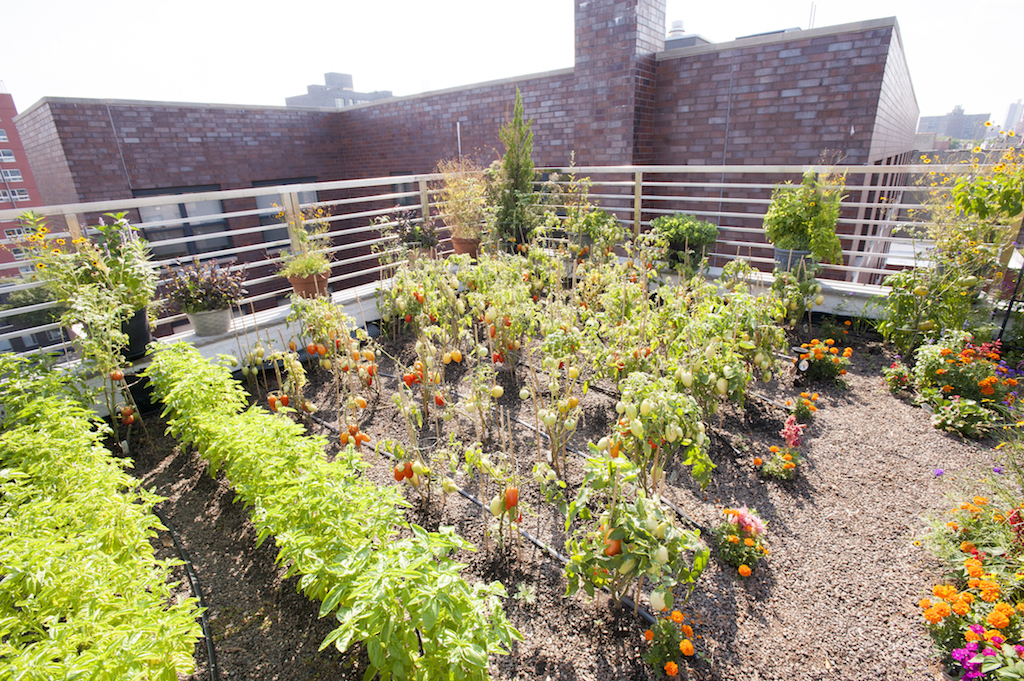
“The back fire escape was our playground,” she said. “We would do our homework on the fire escape. To be so connected, it was great. When we were kids, we left the doors open and just had those little gates in the doorways. It was like everyone on the whole floor was connected.”
Compared to some of the other squats, which had issues with hard drugs or other substance abuse, Umbrella was a very safe, unified place. But all the squatters keep in touch with each other.
“There’s a baby in C Squat now, the first,” Bilsted chimed in. “They just converted,” he added of of the punk-rock former squat on Avenue C.
About eight of the erstwhile squats have converted at this point.
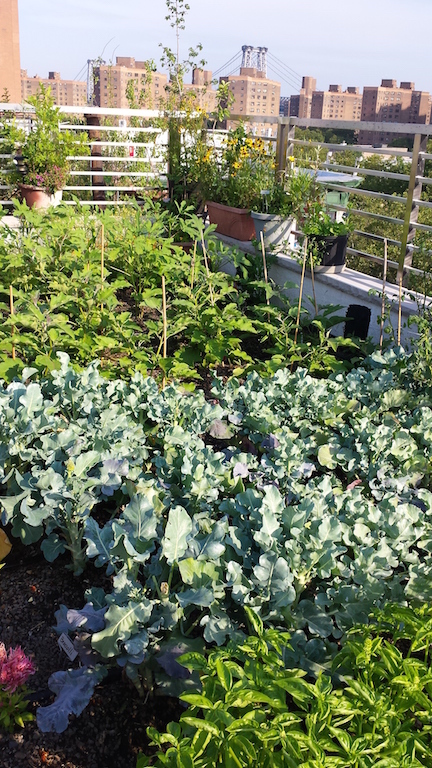
According to Bilsted and others, Umbrella House had at one time been a sort of “Native American crash pad / organizing hub,” but something had gone terribly wrong. Possibly a murder had been committed there, Bilsted wasn’t sure. The city’s response was to seal up all the place’s pipes with concrete and tear out the stairways. And, in an apparent move to hasten the tenement’s demise, holes were also punched in the roof to let the rain pour in. Doors and windows were cinder-blocked shut, blocking access.
“The city sealed it up to make sure no one came back in — but we came back in!” Bilsted laughed.
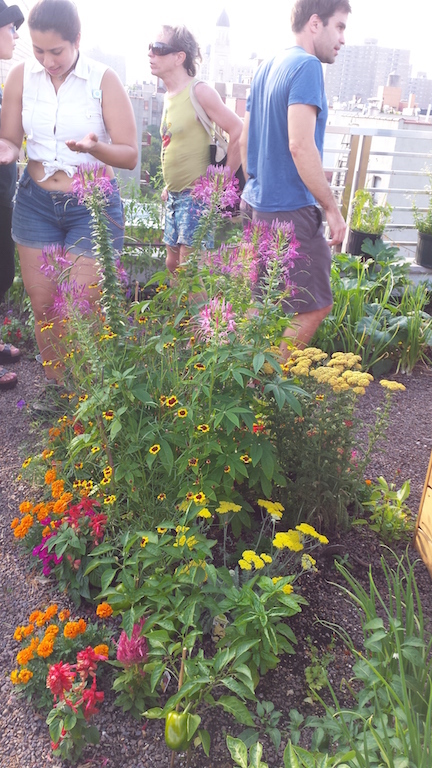
Herman Hewitt, the first vice chairperson of Community Board 3, of which he is a longtime member, was among those checking out the neatly aligned, colorful rows of vegetables in the rooftop garden.
“Beautiful, it’s absolutely well thought-out,” he praised. “I would think a landscaper came up here and did this whole thing.”
As opposed to plots for individual residents, the whole garden is “a free harvest,” Bilsted explained to him. “Everybody gets it. It’s a commons.”
Hewitt had his own moment with the building in the past.
“It’s the first time that I’ve been in this building in 35 years,” he said. “We did the seal-up program. … We were young, we didn’t know what we were doing.”
The city had given the dilapidated tenement to Interfaith Adopt-A-Building, which then closed it up to save it for renovation at a later date. Under the so-called Cross-Subsidy Program, money from the sale of local vacant city-owned lots for development was to have been used to rehab vacant buildings, like the future Umbrella House.
“But then the anarchists and squatters came,” Hewitt recalled with the trace of a smile. “This building and five or six others were supposed to be part of the Cross-Subsidy Program. That’s why they were not knocked down. It’s only because there were too many buildings — and that’s why the squatters moved in.”
Twilight had now fallen as Hewitt, a neighborhood resident of 45 years, told an interested listener stories of the East Village’s epic housing battles of past decades. A gentle breeze briefly wafted over the rooftop, making the city’s oppressive heat for a moment a bit more bearable.
Nearby, Umbrella House residents were relaxing, chatting and laughing, enjoying mojitos with fresh mint — from the rooftop garden, naturally.



